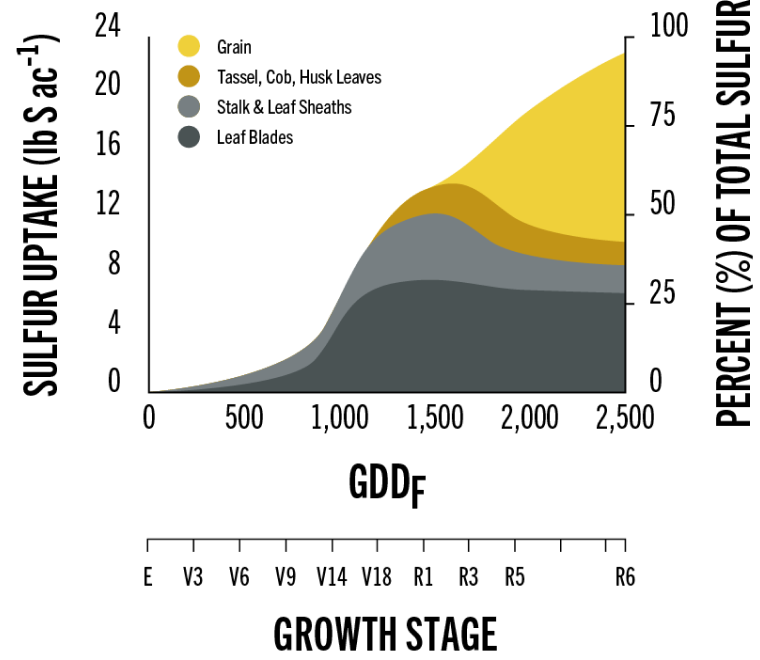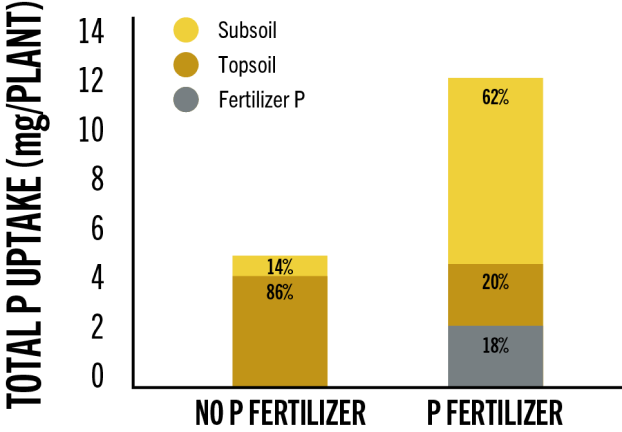Today, crop nutrition is more important than ever. Markets can and do fluctuate. But healthy yields will always have a positive impact on your overall ROI.
Both macro- and micronutrients must be replaced after every season’s harvest. When you rely on MAP/DAP or skip it altogether, it feels like you are saving money. But you’re actually leaving money on the table by settling for a lower yield.

Source: Schnitkey, 2021, University of Illinois (www.farmdoc.illinois.edu).
You need a performance fertilizer that will replenish your fields and boost your yields.
Consider The Big Picture
Look beyond application. Crops need nutrients throughout the growing season, from planting to maturity. For example, more than half of sulfur (S) uptake in corn happens after flowering. Without a steady S supply, late-season deficiencies can significantly impact yield.

Also, look beyond the first few inches of soil. When you apply fertilizer to the topsoil, early root growth is stimulated. Healthier, stronger root systems enable the plant to take phosphorus (P) that is deeper in the subsoil. These subsoil reserves help supply the plant with adequate amounts of P throughout the season, particularly during late-season growth stages.

Chart comparing total P uptake between plants with P fertilizer and no P fertilizer.